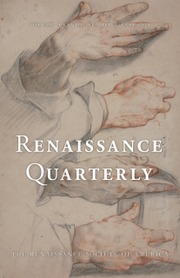The OED lists nineteen distinct meanings for the noun generation. Alexandra Walsham’s Generations, the revised and expanded version of her 2018 Ford Lectures, acknowledges the fact: “Instead of trying to define generation with any precision,” she says, “I have actively embraced its ambiguities” (516). Although not itself a religious concept, its association with religious developments has been intimate and complex. Many of its diverse senses, the OED tells us, are “first attested in English translations of the Bible.”
The complexities abound. Generation can refer to the process by which something in particular is brought into being, especially a person, or to “a social cohort or virtual community sharing common location in time,” or to “the mental structures,” such as the Reformation, “by which we measure and comprehend the unfolding of history itself” (2). Further complexities result from the book’s focus on England’s Reformations (in the plural), in which the “prolonged and incremental” evolution of religious thought and practices (5) resulted not only from confessional differences between Protestants and Catholics, but also among a diversity of nonconforming Christian denominations and sects.
In the making of generations as social cohorts, memory was often the lens through which present occurrences were interpreted and future developments imagined. The implication is that at any given moment during England’s Reformations, multiple generations were in a complex interplay of relationships to the past and to one another, with the members of younger generations, lacking direct knowledge of earlier events, dependent on what was remembered or forgotten in cultural memory. As social cohorts, then, generations were “imagined communities” (8, 512). The upshot, as Walsham demonstrates, is not just that knowledge of the multiple institutional, social, religious, and cultural changes associated with the Reformations was the product of divergent interpretations and “the confessionalization of memory” (506), but that the Reformation as a distinct historical period was itself an interpretative construct whose characterization depends on the views and memories of the religious rivals who made it.
Generations, concentrated on the two centuries between 1500 and 1700, draws its extensive documentation not only on the most up-to-date scholarship—a good deal of it her own or that of her students—but also on manuscript materials from thirty-five separate research collections and archives, illustrated by images from a varied array of sixteenth- and seventeenth-century sources. In keeping with the format of the Ford Lectures, it falls into six chapters, each an extensive and multifaceted exploration of its subject across the spectrum of Christian religious groupings viewed over time and in relation to each other. The first two chapters focus on “the living generations that coexisted at a given moment in time” (169). The next two look at them and their fates as lineages. The final two consider the English Reformations in temporal terms, first as comprising a unit in “official and alternative histories,” and then as the subject of “commemoration and memorialization” (19). The archival collections on which the book depends themselves form an important part of the story. Not only was their creation as “agents of early modern state-building” advanced by the processes of Reformation themselves, but, as Walsham argues, their organization and contents where shaped by the “confessional values” and experiences of the generations whose records, documents, and artifacts they collect and store (489, 495).
No short review can do justice to the richness (and the riches) of this study. In focusing on the formation of generations in the era of the English Reformations, on their complexities as they interacted with one another, and on how those complexities were in turn “invented by the generations” themselves (514), Walsham treats religion and society not as two distinct things interacting with one another but as two sides of the same culture as it changed over time. The result is a book that makes a profound contribution to our understanding of the “multistranded and protracted process” of what she calls England’s “long Reformation” (18). Its deep insights into the dynamics of religious and cultural change during the early modern era in England and beyond offer a stimulus and guide to all scholars engaged in research into the wide range of themes and topics it addresses. Generations is a major achievement.



